|
Notes: Lowton station was situated on the North Union Railway (NUR) which ran from a junction with the Liverpool & Manchester Railway (L&M) at Parkside to Preston. The line was opened by the Wigan Branch Railway (WBR) on 3 September 1832 and trains were operated by the L&M. On 2 May 1834 the WBR merged with the Wigan & Preston Junction Railway (W&PJR) to form the NUR. On 1 January 1846 the NUR was jointly leased by the Grand Junction Railway (GJR) and the Manchester & Leeds Railway (M&LR) pending an Act that was granted on 27 July 1846 vesting it as a joint company of the two. On 16 July 1846, before the Act was passed, the GJR became the LNWR (London & North Western Railway) and a year later the M&LR became the Lancashire & Yorkshire Railway (LYR).
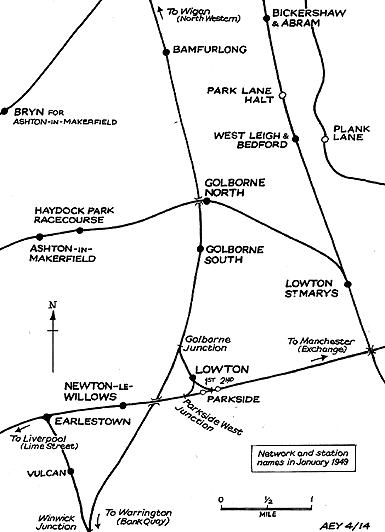 The NUR line connected to the L&M in an east-facing direction. This meant that trains coming from the Liverpool direction had to perform a reverse move at Parkside in order to travel onwards towards Preston. The same issue also applied to trains travelling onto the L&M from the NUR. To solve the problem a line was opened on 1 January 1847 that connected to the L&M line (by then part of the LNWR, having been absorbed by the GJR on 8 August 1845) in a westward facing direction forming a triangle to the north of the L&M line. The western point of the triangle was named Newton-le-Willows Junction, the eastern point was called Parkside Junction and the northern point Lowton Junction. The NUR line connected to the L&M in an east-facing direction. This meant that trains coming from the Liverpool direction had to perform a reverse move at Parkside in order to travel onwards towards Preston. The same issue also applied to trains travelling onto the L&M from the NUR. To solve the problem a line was opened on 1 January 1847 that connected to the L&M line (by then part of the LNWR, having been absorbed by the GJR on 8 August 1845) in a westward facing direction forming a triangle to the north of the L&M line. The western point of the triangle was named Newton-le-Willows Junction, the eastern point was called Parkside Junction and the northern point Lowton Junction.
At Lowton Junction a station was opened at the same time as the west curve. When it opened the station was called Preston Junction. It was located in a cutting on the south side of Southworth Road which passed over the line on a bridge. The facilities provided at Preston Junction were basic consisting of a low platform and a single-storey wooden building on the east side of the line.
By the 1860s the NUR formed part of a main line that stretched from London to Scotland which carried heavy volumes of goods and passenger traffic. The section of former L&M line between Newton-le-Willows Junction and Earlestown Junction had become seriously congested because it had to handle north/south and east/west traffic. To solve the problem the LNWR opened a new line that formed a direct connection between the NUR and the former GJR on 1 August 1864. The new line diverged from the NUR at Golbourne Junction 46 chains to the north of Preston Junction station. It passed to the west of the station ran under the L&M line and connected to the former GJR at Winwick Junction. With the opening of the new line north/south express services no longer passed through Preston Junction station.
On 1 February 1877 the station was re-named as Lowton and Preston Junction. Three years later on 17 February 1880 the station was renamed as Lowton.
 By the 1880s the station had been provided with higher platforms. They were located to the north of Southworth Road. The station building remained in its original position on the south side of the road creating an unusual layout. Access to the up platform (Parkside direction) was via the original building and by passing under the road through the bridge. The down platform (Preston direction) was reached via a sloping path located on the north side of the road. Shelters were provided on each platform. By the 1880s the station had been provided with higher platforms. They were located to the north of Southworth Road. The station building remained in its original position on the south side of the road creating an unusual layout. Access to the up platform (Parkside direction) was via the original building and by passing under the road through the bridge. The down platform (Preston direction) was reached via a sloping path located on the north side of the road. Shelters were provided on each platform.
The LNWR had built a signal box to control Lowton Junction by 1880; it was directly opposite the station building. The box was very tall having a brick base that raised it above the road level so that signalmen could observe the line on the north side. On top of the brick base there was a timber cabin LNWR type 4 box with an 18-lever tumbler frame.
In December 1895 there were10 up and 10 down trains running Monday-to-Saturday as shown in the table below. The trains ran mostly between Wigan and Warrington. Although there was a Sunday service it did not call at Lowton.
| Up Trains December 1895 |
Destination |
Down Trains December 1895 |
Destination |
| 6.48am |
Warrington Bank Quay |
6.26am |
Wigan North Western |
| 8.30am |
Warrington Bank Quay |
7.40am |
Wigan North Western |
| 10.32am |
Earlestown Junction |
9.07am |
Wigan North Western |
| 12.33pm |
Warrington Bank Quay |
11.14am |
Wigan North Western |
| 2.45pm |
Earlestown Junction |
12.42pm |
Wigan North Western |
| 4.40pm |
Warrington Bank Quay |
1.37pm |
Wigan North Western |
| 5.39pm |
Warrington Bank Quay |
4.06pm |
Wigan North Western |
| 7.19pm |
Warrington Bank Quay |
5.43pm |
Wigan North Western |
| 9.05pm |
Warrington Bank Quay |
7.44pm |
Wigan North Western |
| 10.47pm |
Warrington Bank Quay |
9.54pm |
Wigan North Western |
On 1 January 1917 Lowton & Preston Junction station was closed as a wartime economy measure. It reopened on 1 February 1919.
On 1 January 1922 the LYR was absorbed into the LNWR thereby bringing the NUR under the ownership of one company. The July 1922 timetable showed 10 up and 11 down services Monday-to-Friday with an extra train in each direction on Saturdays.
On 1 January 1923 Lowton became part of the London Midland & Scottish Railway (LMS). The LMS summer timetable for 1932 showed 13 up and 13 down trains.Monday-to-Friday with a couple of extra services on Saturdays. Many of the up services ran south of Warrington to Hartford. There was also a down train that ran to Blackburn.
By the summer of 1947 Lowton had only 8 up and 8 down trains Mondays-to-Fridays. On Saturdays there was one less down service. The up trains ran to Warrington except one which ran to Chester. One down service ran to Preston and all of the others to Wigan North Western.
 On 1 January 1948 the station became part of British Railways London Midland Region. The passenger service did not improve, the summer 1949 timetable showing 7 up and 6 down services Monday-to-Friday with an extra service in each direction on Saturdays. British Railways withdrew the passenger service from 26 September 1949 and the station closed completely. On 1 January 1948 the station became part of British Railways London Midland Region. The passenger service did not improve, the summer 1949 timetable showing 7 up and 6 down services Monday-to-Friday with an extra service in each direction on Saturdays. British Railways withdrew the passenger service from 26 September 1949 and the station closed completely.
After closure the station building was demolished but the platforms remained extant.
In the early 1970s the 1847 curve from Newton-le-Willows Junction and the line through Lowton station to Golborne Junction was electrified (along with a section of the former L&M between Newton-le-Willows Junction and Earlestown) as part of the West Coast main line electrification. The signal box at Lowton was closed, the junction becoming the responsibility of Warrington Power Box which opened on 17 September 1972. The reason for the electrification through Lowton station was to allow some trains to take this route rather than the 1864 direct line between Golborne Junction and Winwick Junction which allowed slower moving freight trains to get out of the way of fast passenger services. It also allowed some passenger services to stop at Newton-le-Willows or Earlestown.
In December 2013 the line between Lowton Junction and Parkside Junction was also energised, this time as part of the electrification of the former L&M. Electric passenger services began to operate over the newly electrified line, running between Manchester and Glasgow. The platforms at Lowton station were extant in April 2014.
See also Parkside 2nd, Golborne
South and Bamfurlong
|

.jpg)
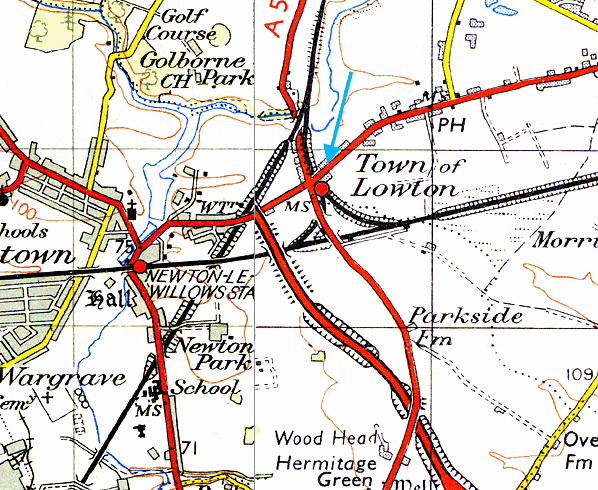
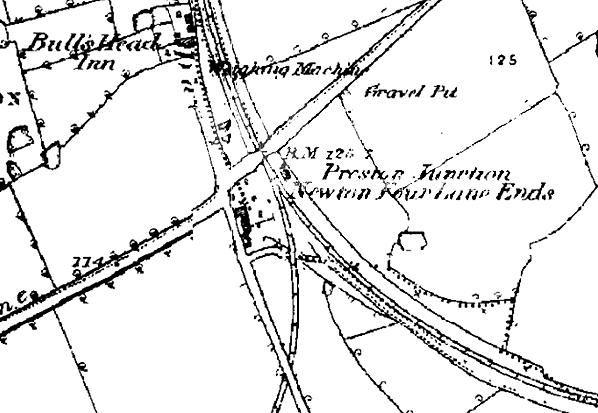
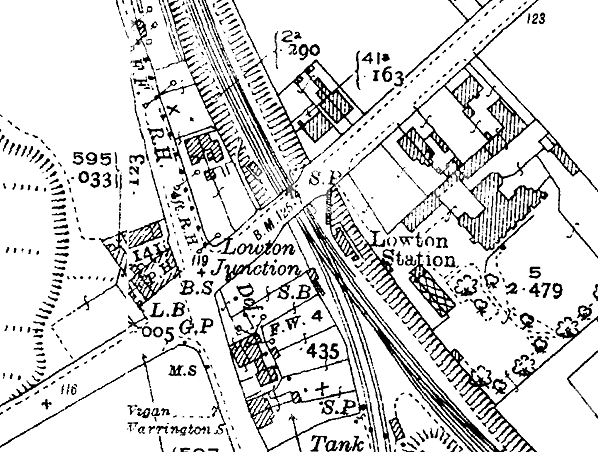
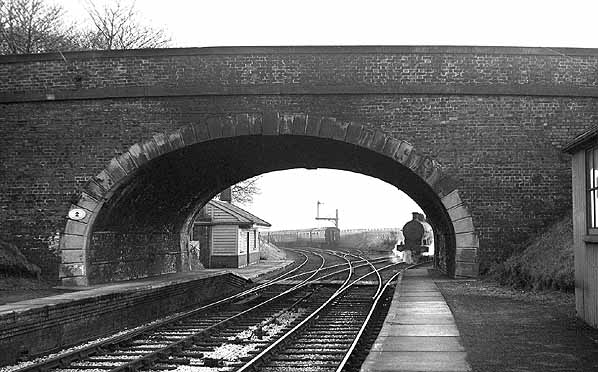
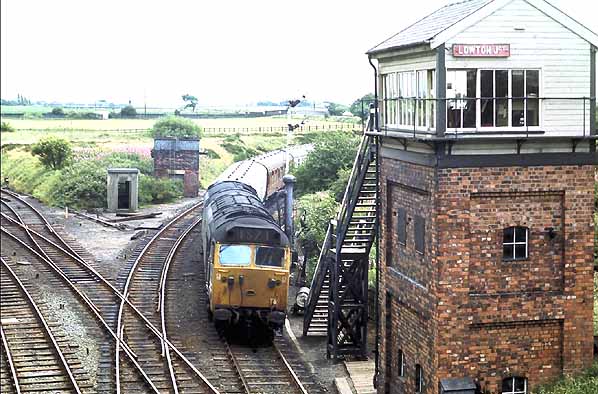
3.jpg)
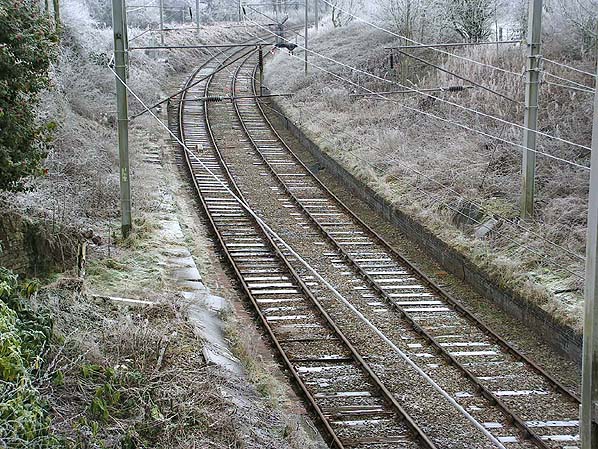
.jpg)
.jpg)
 Home
Page
Home
Page
 The NUR line connected to the L&M in an east-facing direction. This meant that trains coming from the Liverpool direction had to perform a reverse move at Parkside in order to travel onwards towards Preston. The same issue also applied to trains travelling onto the L&M from the NUR. To solve the problem a line was opened on 1 January 1847 that connected to the L&M line (by then part of the LNWR, having been absorbed by the GJR on 8 August 1845) in a westward facing direction forming a triangle to the north of the L&M line. The western point of the triangle was named Newton-le-Willows Junction, the eastern point was called Parkside Junction and the northern point Lowton Junction.
The NUR line connected to the L&M in an east-facing direction. This meant that trains coming from the Liverpool direction had to perform a reverse move at Parkside in order to travel onwards towards Preston. The same issue also applied to trains travelling onto the L&M from the NUR. To solve the problem a line was opened on 1 January 1847 that connected to the L&M line (by then part of the LNWR, having been absorbed by the GJR on 8 August 1845) in a westward facing direction forming a triangle to the north of the L&M line. The western point of the triangle was named Newton-le-Willows Junction, the eastern point was called Parkside Junction and the northern point Lowton Junction.  By the 1880s the station had been provided with higher platforms. They were located to the north of Southworth Road. The station building remained in its original position on the south side of the road creating an unusual layout. Access to the up platform (Parkside direction) was via the original building and by passing under the road through the bridge. The down platform (Preston direction) was reached via a sloping path located on the north side of the road. Shelters were provided on each platform.
By the 1880s the station had been provided with higher platforms. They were located to the north of Southworth Road. The station building remained in its original position on the south side of the road creating an unusual layout. Access to the up platform (Parkside direction) was via the original building and by passing under the road through the bridge. The down platform (Preston direction) was reached via a sloping path located on the north side of the road. Shelters were provided on each platform.  On 1 January 1948 the station became part of British Railways London Midland Region. The passenger service did not improve, the summer 1949 timetable showing 7 up and 6 down services Monday-to-Friday with an extra service in each direction on Saturdays. British Railways withdrew the passenger service from 26 September 1949 and the station closed completely.
On 1 January 1948 the station became part of British Railways London Midland Region. The passenger service did not improve, the summer 1949 timetable showing 7 up and 6 down services Monday-to-Friday with an extra service in each direction on Saturdays. British Railways withdrew the passenger service from 26 September 1949 and the station closed completely. 